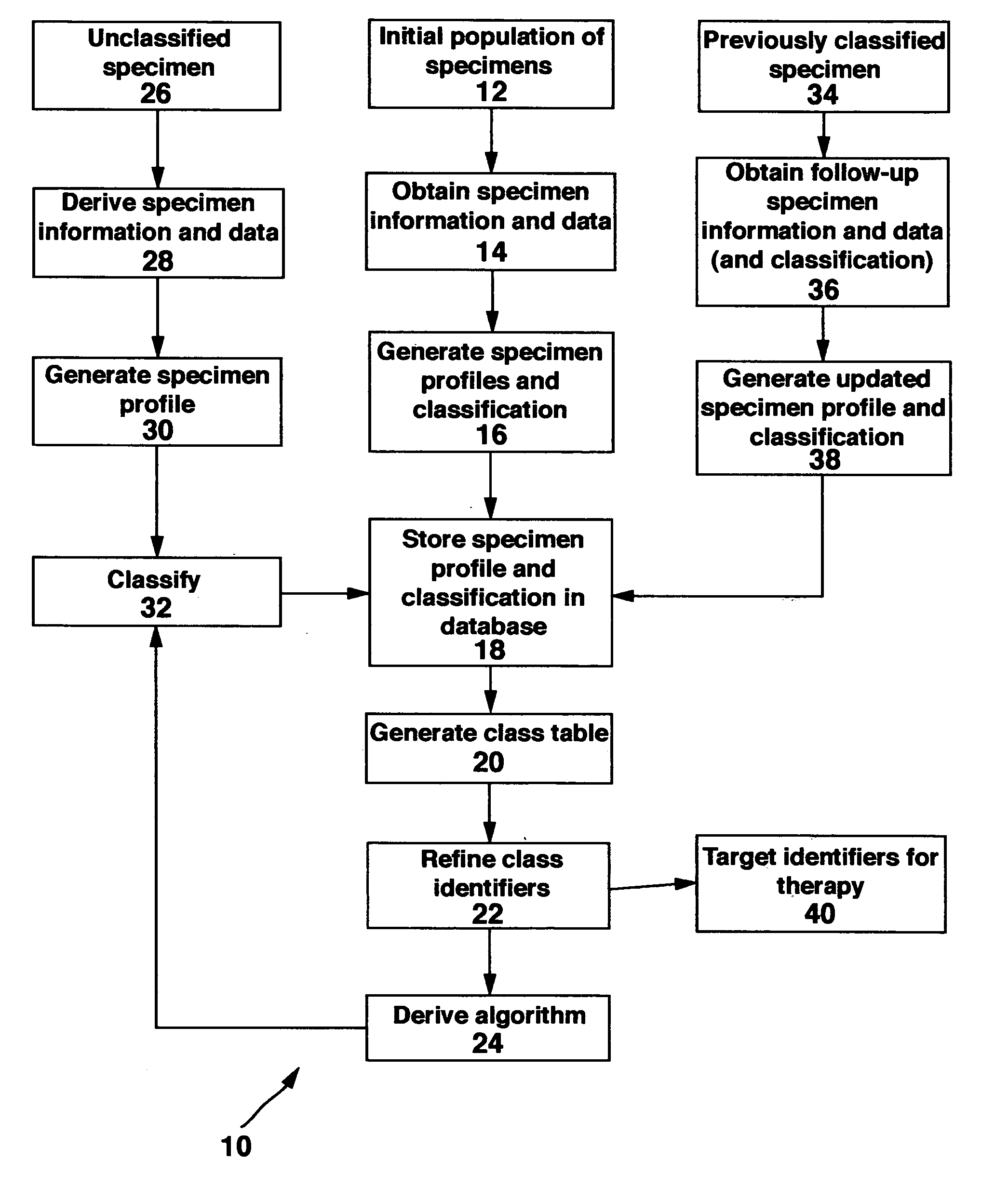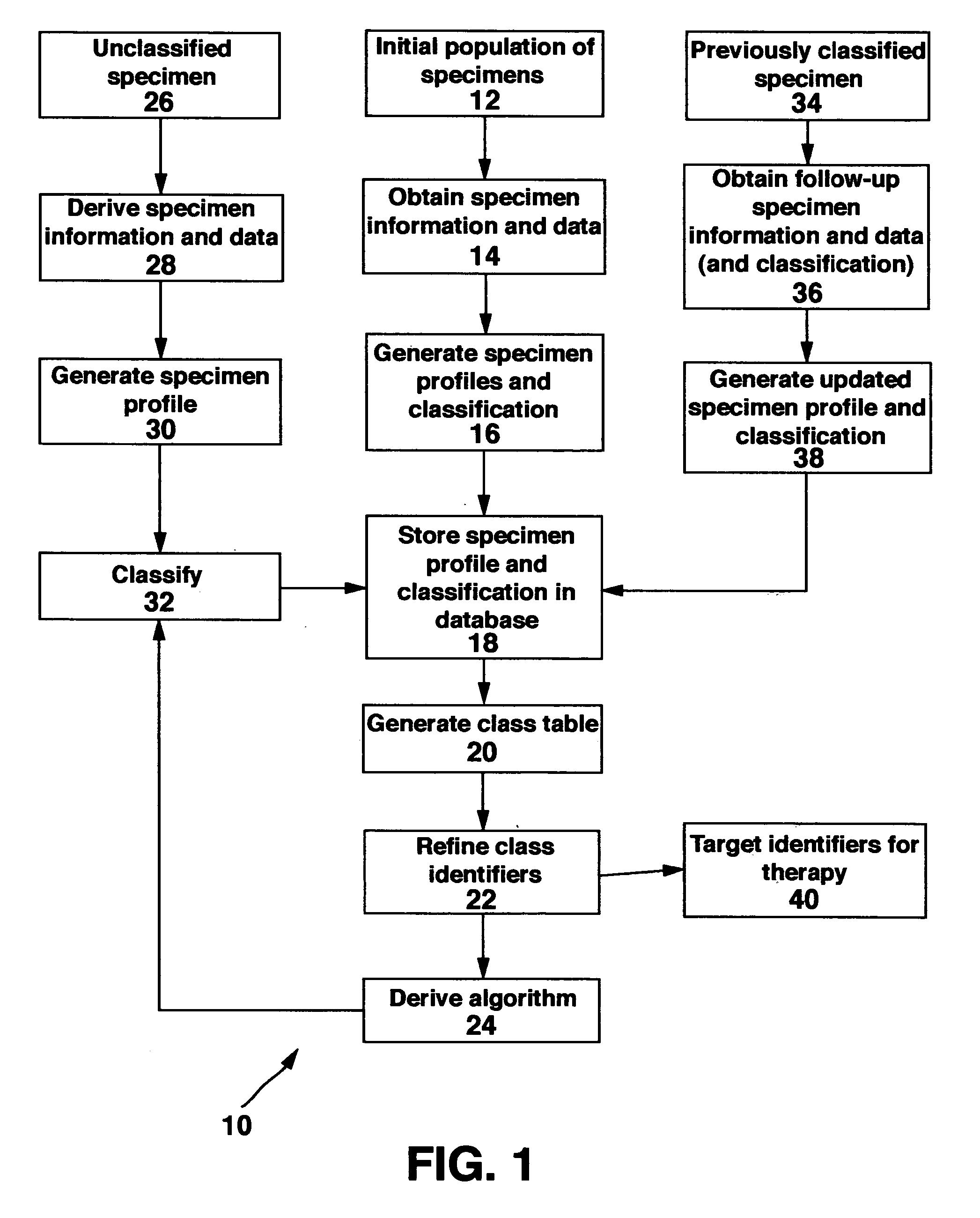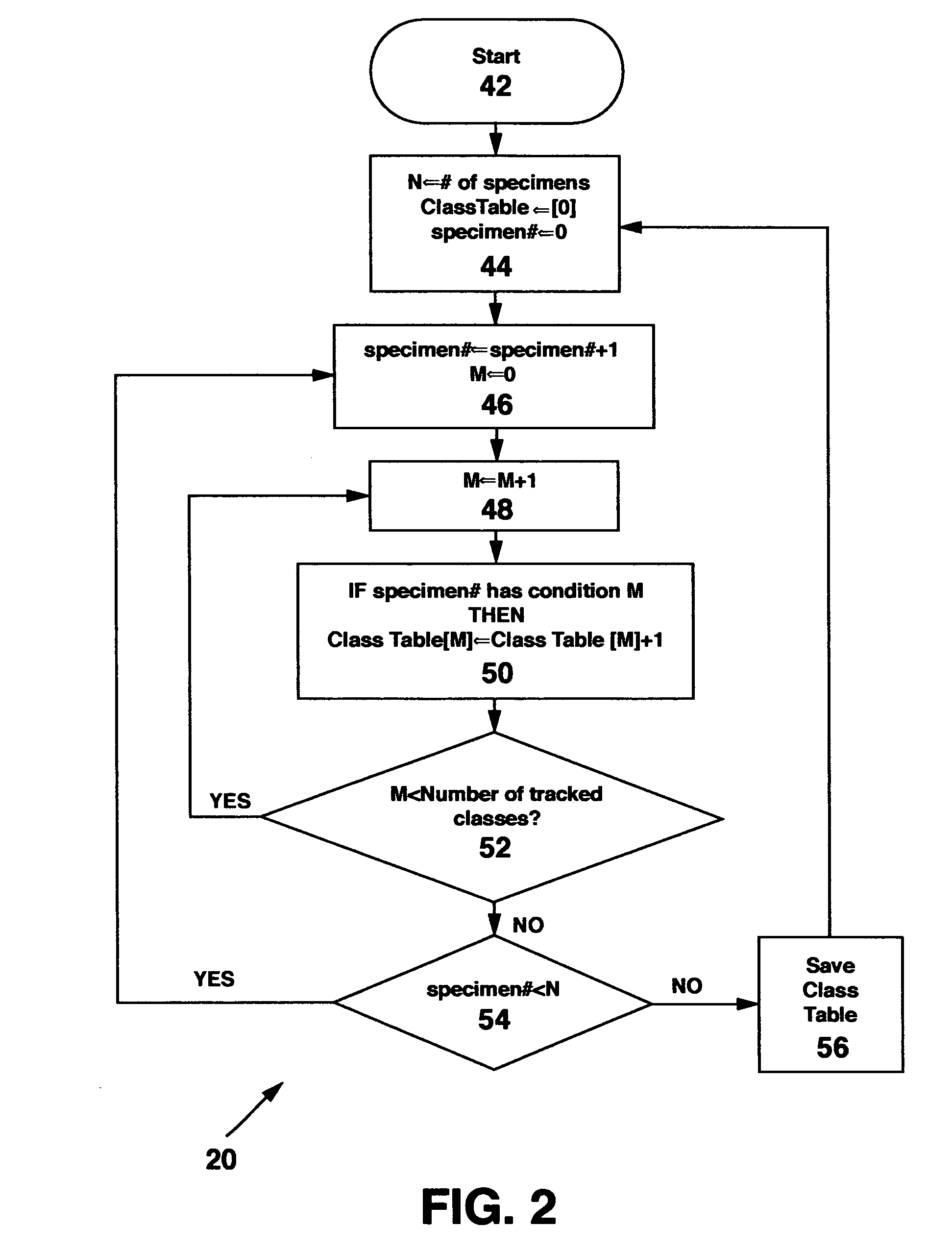Self-improving classification system
a classification system and self-improvement technology, applied in the field of self-improvement of classification system, can solve the problems of difficult and imprecise process, inability to reliably identify all patients, difficulty in diagnosing patients with incomplete symptoms or partially penetrated phenotypes, etc., and none of these tests have the desired specificity and sensitivity to identify all patients
- Summary
- Abstract
- Description
- Claims
- Application Information
AI Technical Summary
Problems solved by technology
Method used
Image
Examples
example 2
[0130] A second representative clinical study to discover class identifiers was carried out with an additional 30 patients. These additional patients also had coronary artery disease and met specific inclusion criteria. They were divided into the two groups based on whether or not patients had an IMD. The patients having an IMD also had at least one true VT / VF episode with a cycle length less than or equal to 400 ms terminated in the last 90 days. A total of 29 patients were in the test group, which consists of patients with an IMD, and 49 patients were in the control group.
[0131] Patients filled out an extensive questionnaire that included medical information that was then used in creating specimen profiles. Table 5 shows the patient characteristics included the specimen profile and the relative breakdown between the test and control groups.
TABLE 5Patients in ICDPatients inTotalArmControl ArmPatientsPatient Characteristics(N = 29)(N = 49)(N = 78)Gender (N, %)Male29 (100%)49 (100...
example 3
[0183] A third genetic study examining 451 SNPs was performed with an additional 12 patients for a total of 90 patient samples included in the study. Here, the control group consists of 52 patients, and the test group consists of 38 patients. The analysis was carried out as previously described, but the results are used to stratify patient risk of experiencing fatal VT / VF. This stratification scheme can be subsequently used as a class identifier in a classification algorithm.
[0184] rs1008832 is located at position chr12:2483782, Build 120, within the CACNA1C gene (Accession No. NT—009759), which codes for the calcium channel, voltage-dependent, L type, alpha 1C subunit protein. The function of this protein was previously described. The SNP and its flanking regions were amplified using primers 5′-tgc aca tga aca aag ccc-3′ (SEQ ID NO. 84) and 5′-aaa gtt agg aaa gaa gaa gca gaa t-3′ (SEQ ID NO. 85). The SNP was sequenced using the oligo 5′-aga gcg agt gac gca tac taa ggc agg cag cag ...
PUM
| Property | Measurement | Unit |
|---|---|---|
| diameter | aaaaa | aaaaa |
| electrical | aaaaa | aaaaa |
| threshold levels | aaaaa | aaaaa |
Abstract
Description
Claims
Application Information
 Login to View More
Login to View More - R&D
- Intellectual Property
- Life Sciences
- Materials
- Tech Scout
- Unparalleled Data Quality
- Higher Quality Content
- 60% Fewer Hallucinations
Browse by: Latest US Patents, China's latest patents, Technical Efficacy Thesaurus, Application Domain, Technology Topic, Popular Technical Reports.
© 2025 PatSnap. All rights reserved.Legal|Privacy policy|Modern Slavery Act Transparency Statement|Sitemap|About US| Contact US: help@patsnap.com



